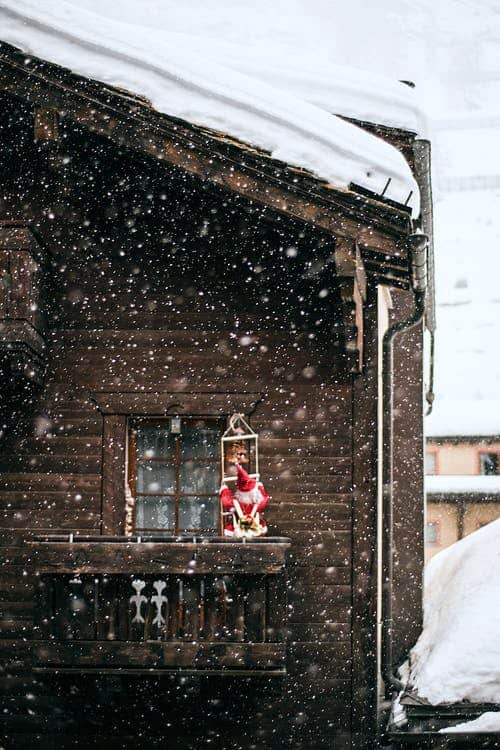On second thought, that title needs further explanation since it depends on the season. While you never want to see ice in your dams on your roof in winter, the last thing you want to see in fall is leaves piling up in your roof gutters because they’re an open invitation to ice dams. If you don’t know what an ice dam is, consider yourself lucky. Either you’re always fastidious about clearing your gutters so that snowmelt can find its way to your downspouts; or you live in a climate where it never snows. But just so you know, ice dams are those long ridges of ice you see on the houses of neighbors who neglected to clear their gutters of leaves last fall.

Gathering Ingredients For an Ice Dam
Rainwater gathers in your roof gutters just as it gathers in street gutters. When they are clear, water doesn’t stay long, since it travels quickly along to the downspouts and down to the ground just as street water flows along and down through sewer drains. However, should trash clutter the street drains, or leaves and other debris in downspouts, backups happen. This results in flooded streets as well as gutters filled to the brim with water and slime. As if this weren’t bad enough three seasons of the year, in winter, once the temperature dip below 32 degrees, and you sprinkle in a bit of snow, you have the ingredients for danger; danger for pedestrians and gutters alike.
The Perfect Recipe for an Ice Dam
As any cook will tell you, maintaining the right temperature is crucial in turning out a great meal. The temperature can make or break ice dams. However, it’s not just the exterior temperature, it’s the interior temperature as well. If the heat inside your house should seep through the ceiling and roof, the temperatures of the shingles on the upper portions of the slanted roof will rise, melting the snow up there. The water will flow down the roof until it reaches the lower portions where the temperature is still below 32 degrees and voilà! You have an ice dam.
Why You Don’t Want Ice Dams
Ice Dams in your gutters can be compared to ice cubes in your refrigerator’s freezer trays. Unfortunately, you can’t flip your gutters over and shake the ice dams out. You have to leave them there and hope that a warm spell comes along and melts them. You also have to hope that happens before those heavy ice mounds wreak havoc on the outside now and on the inside later when the ice backed up on your roof melts seeps in through the shingles. While the inside damage may lay hidden for a while, the ice damage to your gutters may announce itself with a sudden boom in the night – literally.
While fresh powdery snow doesn’t add much weight to your gutters, wet snow is heavier and ice heavier still. According to FEMA, those figures are three pounds per square foot for light snow versus 21 lbs/sq ft/ for heavy wet snow versus 57 lbs/sq ft for ice. Let ice dams build up and eventually, the gutter will reach the breaking point. The fitting holding the gutter to the house will break, and entire sections will break off and, as they do, cause additional damage to the house’s siding. If you happen to be outside at the time witnessing this spectacle, it will leave you feeling utterly helpless.
Attacking Ice Dams Where They Live
But there are steps you can take, even in the dead of winter to prevent this from happening to your home.
- If the snow has already fallen on your roof, you can remove it with a roof rake before it has a chance to freeze.
- But if it does freeze do not dial up the heat in hopes of melting it. This will only serve to fan the flames so to speak, speed up the melt/refreeze cycle which will eventually lead to ice dam formation,
- Call in a professional to perform a home energy audit, to find out what you can do to prevent this from happening again next winter.
Fortunately, there is an even better, more fundamental answer. Don’t let leaves accumulate in your gutters in the first place. And it doesn’t involve hauling out the ladder several times during the fall to clear your half-round gutters. You can keep them dry and clean if you cover them – really cover them; not with plastic or metal grates that squirrels and other rodents can chew through, but with a professionally installed leaf-free solution like the K-Guard Gutter System.
Latest posts by Canadian Home Trends (see all)
- Dining Room Design Tips - December 5, 2025
- Practical Luxury in Forest Grove - December 5, 2025
- The Hidden Value of Great Design - December 5, 2025






